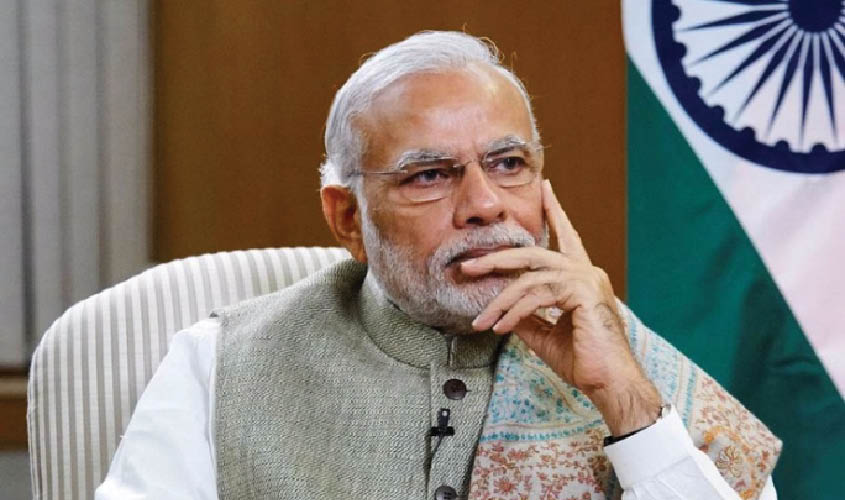Modi’s China policy and Pakistan’s admission of Pulwama devilment change the paradigm.
Fifty-eight years ago, India observed a Dark Diwali on 28 October 1962. Not a single lamp was lit. No firecrackers were burst. The nation had been stunned by the “betrayal of a brother”. Chinese patrols had been “straying” into Indian land since the October 1961—in September 1962 a formal aggression was launched by crossing the McMahon Line in what was then known as NEFA (North-East Frontier Agency, presently the state of Arunachal Pradesh, but then part of the larger state of Assam). On 20 October, the aggression was extended to Ladakh and a full-fledged war ensued. “Hindi-Chini Bhai Bhai”, which was a popular slogan on the streets of India when Chinese Premier Zhou Enlai (then spelt as Chou Enlai) visited India in June 1954 and April 1960, had turned into mockery.
Chetan Anand’s 1964 war movie, Haqueeqat depicted, based on facts culled from the ground reality of 1962, how the Chinese aggressors mocked Indian troops on loudspeakers by chanting “Hindi-Chini Bhai Bhai”, while asking them to vacate Indian forward posts and go away. China occupied 36,000 sq km of Indian land during the month-long war. On 21 November, after ceasefire, they vacated large chunks of land and withdrew, but kept areas strategic to their interest in the Western sector.
History has not been repeated in 2020, though the hazily demarcated border located on difficult terrain has once again become an epicentre of eyeball-to-eyeball confrontation. But this year there is no cause for a black Diwali. Prime Minister Narendra Modi has appealed to the nation to light a lamp in every home to honour our brave jawans who are holding the Indian Tricolour high in the chilling, inhospitable heights of Ladakh and elsewhere. The Covid pandemic has dimmed the spirit of celebration. But the high spirit displayed by Indian soldiers has given the nation a reason to ignite a flame of hope and reverence to the valour of the Indian Jawan. The India of 2020 is much different from the India the Chinese People’s Liberation Army bullied in 1962.
India’s handling of the PLA belligerence in 2020 has perhaps stunned China: a situation diametrically opposite to what happened in 1962. Initially the national leadership then did not believe that China will strike. When the invasion took place, sources have said in later years that Jawaharlal Nehru’s reaction was, “throw them out”. (Perhaps Rahul Gandhi echoed this when in a speech in Haryana he claimed that had Congress been in power the Chinese would have been “thrown out in 15 minutes”.) India has now become a frontline state in the face of Chinese expansionism. The just held 2+2 Indo-US dialogue and the stance of the Quad powers have put India in a pivotal position in the Free World.
By some coincidence, when the world was beginning to appreciate India’s pacifist but firm approach on China, events in Pakistan have lent credibility to India’s continuous finger-pointing at the cross-border belligerence and mischief which was highlighted by the Pulwama incidents in 2019. Minister Fawad Chudhary’s admission that Pulwama had been triggered by Islamabad and the subsequent disclosure by Pakistan’s Opposition leader Ayaz Sadiq that apprehension of an Indian attack to free its pilot Abhinandan Varthaman had made Pakistan leaders tremble has corroborated the efficacy of the policy of surgical strikes and the Balakot air attack. Opposition leaders in India had been pooh-poohing and even questioning the Modi government on its Pakistan strategy (as they are doing on China).
Meanwhile, focus has been on West Bengal, where elections are due next summer. Prime Minister’s speech at the inauguration of Durga Puja celebrations on 22 October and the RSS Sarsanghchalak’s customary annual Vijayadashami address on 25 October cited notables from Bengal. The RSS chief quoted Swami Vivekananda’s Chicago address, Rabindranath Tagore’s essay “Swadeshi Samaj” and Sri Aurobindo’s 1909 Uttarpara speech to explain Hinduism and Hindutva, which he likened to patriotism. Modi cited a number luminaries from Bengal in his speech, which was sans politics—he included religious, social, literary figures, freedom fighters and scientists to recall “The Wonder that was Bengal”. (With due apologies to A.L.Basham, who authored The Wonder that was India.) Modi did not even once name Mamata Banerjee. He skirted politics while delivering a discourse which may affect the future course of politics in West Bengal.
Modi recalled that the concept of “Bharat Mata” had originated in Bengal. In 1905 a nephew of Rabindranath Tagore, Abanindranath, a renowned painter, drew a portrait of Bharat Mata (the concept of nation as Mother had originated with Bankimchandra Chatterjee’s Ananda Math in 1882, which has the poem Vande Mataram). Abanidranath Tagore depicted a saffron-clad woman, dressed like a sadhvi, holding a book, sleaves of paddy, a piece of cloth and a rosary in her hands. In 1909, Vivekananda’s disciple, Sister Nivedita resolved to popularise this portrait of Bharat Mata from “Kedarnath to Cape Comorin”. As a result of her effort soon thereafter processions were taken out in UP where people carried the portrait and raised the slogan, “Bharat Mata ki Jai”. Modi, by invoking that both Vande Mataram and Bharat Mata ki Jai have their moorings in Bengal has given a sharp message. It remains to be seen if the West Bengal unit of BJP, which presently is ridden by caustic factionalism, is able to convert Modi’s Durga Puja speech to its advantage in the months to come.

